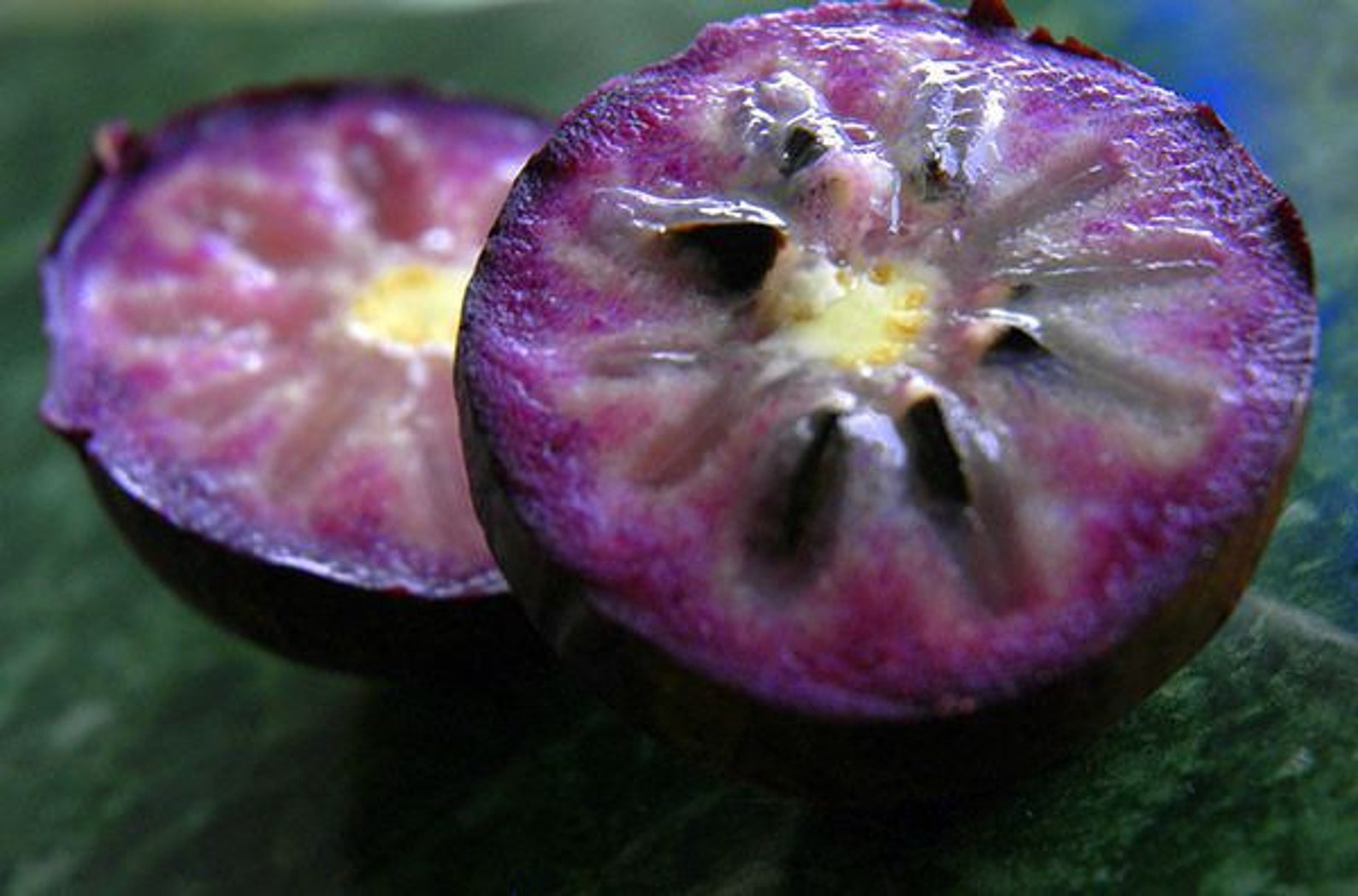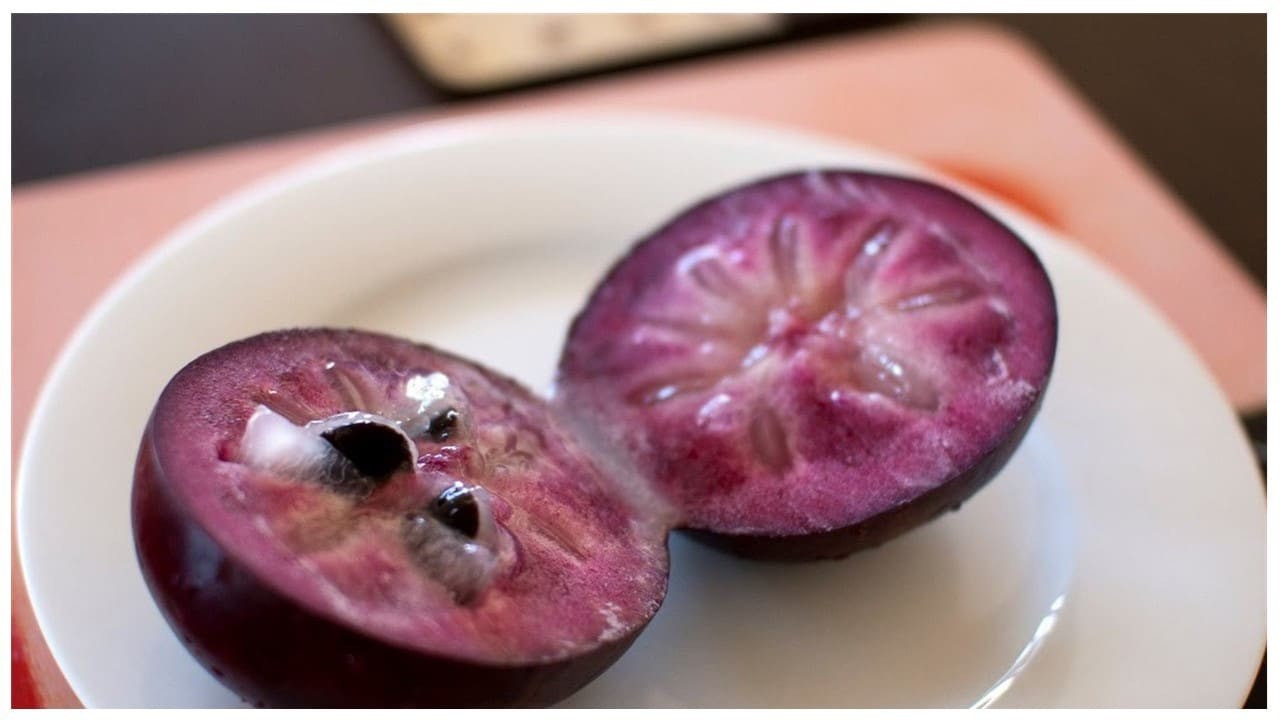
The sweet pulp has a high water content its texture is unique, and I can only describe it as smooth, silky and soft, similar to a very ripe pear.
#Purple star apple skin#
The purple skin is inedible its seeds are generally flat, oblong and brown, and are also inedible. (There is also a variety with a light green exterior, but I have never seen it in Costa Rica).

The star apple is characterized by its purple flesh and milky, mild pulp. You'll find it at your local farmers' market, street stands, or grocery store for less than $1.50 per pound. You may have also heard it referred to as cainito, aguay, or milk fruit it's known as caimito here in Costa Rica. In Costa Rica, the star apple is typically in season from late January through April. Star apple seeds are known to be toxic, and the latex in the rind can cause some discomfort in the mouth, so these should be discarded.Star apple ( Chrysophyllum cainito), one of my favorite tropical fruits, is a sweet treat that deserves its name: the exterior is the size of an apple and when cut in half, the interior seed pattern resembles a star. From there, simply scoop the flesh from the rind and separate it from the hard, pointy seeds. Then, twist the fruit open to reveal the star shape inside that gives star apples their moniker. To minimize this, we recommend chilling the star apple, then carefully scoring the fruit around its circumference while avoiding the hard seeds in the center.

You see, the inedible rind contains natural latex that can put a damper on your tastebuds if it touches too much of the delicate fruit inside.

#Purple star apple how to#
The trick to having the best star apple eating experience is to know how to slice it. Star apples are versatile fruits that can add special oomph to just about any dish! Use it as an accompaniment to fresh cheese plates, stew it in your favorite fruit compotes, top your salads, granola and yogurt bowls with them, or chop it into your next ceviche. The delicate, grape-meets-persimmon flesh of the star apple is particularly well suited for sweet recipes including jams, candies, sorbets and fruity pastries. They’re the fruit of a fast growing, shrubby tree whose leaves and bark are known to be used for their medicinal properties.Īround the world, star apple varieties are enjoyed raw directly from the rind and in cooked recipes, too. Today, they’re cultivated in the United States and Asia as well. Star apples are believed to be native to Central America and the Caribbean. Big star apple fans swear by chilling the star apples for the best flavor experience. Check for fruit that feels heavy for its size in your hand, and that it yields to gentle pressure for your thumb. Whether a green or purple variety, star apple rinds are leathery and smooth, and will have some normal wrinkling. Star apples can be somewhat round, oblong or a little pear shaped, and are usually about two to four inches across. If you’re lucky enough to have a star apple in your hand, it’s ripe enough to eat! Even though star apples are only harvested when they’re ripe, their flavor keeps developing as they mature after picking. The inedible seeds in the center range from brown to black, and are arranged in a star pattern. The fruit’s texture is similar to a grape, with a milky consistency that can feel almost jellylike. Inside, the flesh is either purple or white, and naturally occurring white latex permeates the flesh. Star apples aren’t just delicious, they’re beautiful too! Outside, star apple varieties range in color from purple to green.


 0 kommentar(er)
0 kommentar(er)
